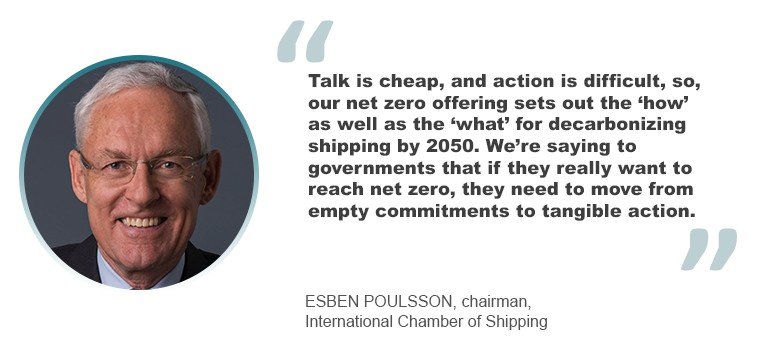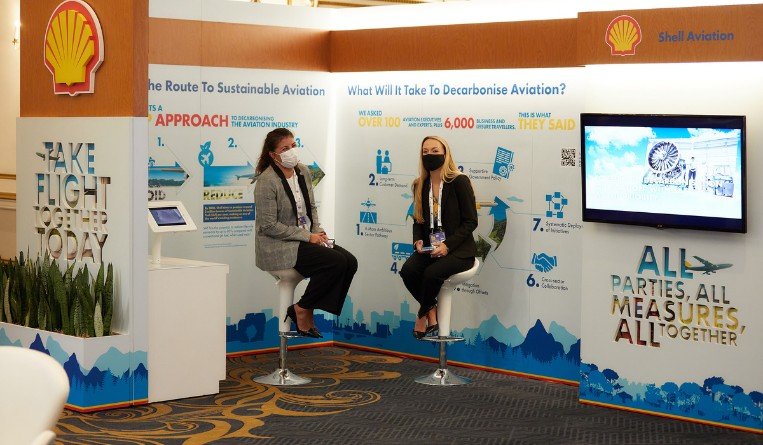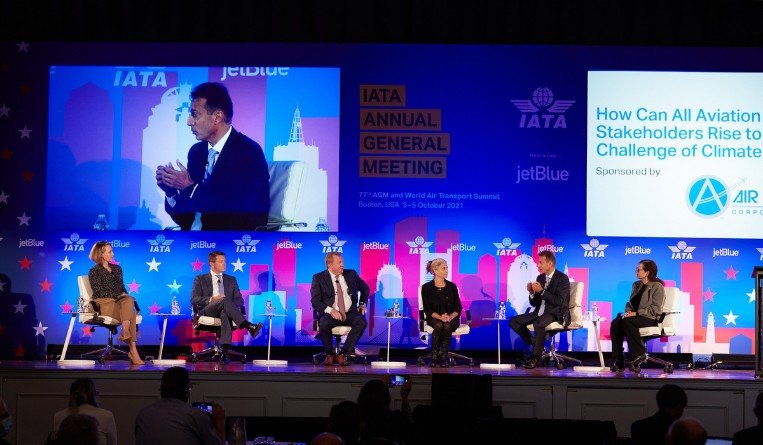The supply chain industry is ramping up its efforts to push for sustainability in the sector with representatives from both the aviation and shipping sectors adopting a net zero carbon emissions goal by 2050.
The International Air Transport Association (IATA) during its 77th Annual General Meeting approved a resolution for the global air transport industry to achieve net zero carbon emissions by 2050, which is aligned with the Paris Agreement goal for global warming not to exceed 1.5°C.
Meanwhile, the International Chamber of Shipping (ICS) – the world’s principal shipping organization, representing around 80% of the world’s merchant tonnage – has submitted plans to the industry’s UN regulator, the International Maritime Organization (IMO), detailing urgent measures which governments must take to help the shipping industry achieve net zero CO2 emissions, also by 2050.
“The world’s airlines have taken a momentous decision to ensure that flying is sustainable. The post-Covid-19 reconnect will be on a clear path towards net zero. With the collective efforts of the entire value chain and supportive government policies, aviation will achieve net zero emissions by 2050,” Willie Walsh, IATA’s director general said.
IATA pointed out that stabilizing emissions to emissions reductions will require a collective effort from all industry stakeholders, including governments to break aviation’s dependence on fossil fuels.
“Achieving sustainable global connectivity cannot be accomplished on the backs of airlines alone,” Walsh said. “All parts of the aviation industry must work together within a supportive government policy framework to deliver the massive changes that are needed, including an energy transition.”
SAF production incentives pushed
Like in other industries, the IATA chief said governments should also provide policies and financial incentives to ramp up production of sustainable fuel, which will fuel the majority of aviation’s global emissions mitigation by 2050.
“Technology exists, but production incentives are needed to increase supply and lower costs,” Walsh said.
IATA noted that to be able to serve the needs of the 10 billion people expected to fly in 2050, at least 1.8 gigatons of carbon must be abated in that year.
According to IATA’s plan, 65% of the emissions will be abated through sustainable aviation fuels with the rest through new propulsion technology, such as hydrogen, to take care of another 13%. And efficiency improvements will account for a further 3% and the remainder could be dealt with through carbon capture and storage (11%) and offsets (8%).
“Sustainable aviation fuels (SAF) will fuel the majority of aviation’s global emissions mitigation in 2050,” Walsh said, welcoming the announcements from several big energy suppliers that they intend to produce billions of extra litres of SAF. “But we cannot tolerate announcements with no follow-up. To be meaningful, fuel suppliers must be accountable for delivering SAF at cost competitive prices.”
E-planes, hydrogen aircraft by 2035
By 2025, IATA said with appropriate government policy support, SAF production is expected to reach 7.9 billion litres (2% of total fuel requirement), and 23 billion litres by 2030 – which will rise to 91 billion litres (17% of total fuel requirement) by 2035.
Based on IATA’s timeline, electric and/or hydrogen aircraft for the regional market (50-100 seats, 30- to 90-minute flights) will also become available around this time until 2045 when SAF production is seen at 346 billion litres (54% of total fuel requirement) with hydrogen aircraft for the short-haul market (100-150 seats, 45-120 minute flights) becoming available.
By 2050, IATA expects SAF production to hit 449 billion litres, or 65% of total fuel requirement.
IATA reiterated that the best way to support sustainability efforts in aviation is to provide incentives.
“Governments must be active partners in achieving net zero by 2050,” Walsh added. “The focus must be on reducing carbon. Limiting flying with retrograde and punitive taxes would stifle investment and could limit flying to the wealthy. Incentives are the proven way forward.”
In the meantime, the International Civil Aviation Organization’s (ICAO) Carbon Offsetting and Reduction Scheme for International Aviation (CORSIA) will stabilize international emissions at 2019 levels in the short-to-medium term.
For its part, the ICS is also backing the target of net zero emissions from the industry by 2050, setting out a pathway to the IMO.
“Talk is cheap, and action is difficult, so, our net zero offering sets out the ‘how’ as well as the ‘what’ for decarbonizing shipping by 2050. We’re saying to governments that if they really want to reach net zero, they need to move from empty commitments to tangible action,” Esben Poulsson, chairman of ICS, said ahead of the 2021 United Nations Climate Change Conference, also known as the COP26 meeting, which was held from October 31 to November 12 this year.
“A net zero carbon ambition is achievable by 2050, but only provided governments take the unglamorous but urgent decisions needed to manage this process within a global regulatory framework,” he added.

Maritime research fund needed
The ICS paper highlights the need to take “urgent measures” required to accelerate and expedite an increase in technology readiness levels by 2030 if the more ambitious 2050 targets are to be achieved.
ICS said a key step would be for governments to approve the establishment of the US$5 billion IMO Maritime Research Fund (IMRF) at a critical IMO meeting this month.
“We have expended a great deal of senior industry leaders time deliberating and analyzing the most effective and equitable proposals to ensure that we can decarbonize our industry quickly and effectively. If adopted by governments at the IMO, these measures could lead to regulation that will swiftly move the shipping sector and associated industries towards a zero-carbon future,” said John Adams, chairman of the ICS GHG measures working group.
“Governments can make a huge statement of their intent to get behind this new timeline by approving the industry’s proposed US$5 billion R&D fund in November at the IMO,” he added.
Further to the R&D fund, earlier this year, ICS already made a proposal for a broader carbon levy for shipping.
Korean Air said the 2050 deadline is a “tough goal,” citing various challenges currently hindering the industry’s sustainability efforts.
“Sustainable aviation fuel is the most important means to reduce carbon emissions in the aviation sector, but currently its production and deployment is still very limited,” Korean Air told Asia Cargo News in a statement.
“Considering that current SAF prices are 3-5 times more expensive compared to conventional jet fuel, it is important for governments to adopt an incentive-based policy for SAF until production volume increases and prices become more affordable,” it added, noting that Asia in particular is lagging in SAF production compared to Europe and North America.
“It is a tough goal, but the industry made a commitment, and is working together to achieve the goal. Technology is another critical key to make this happen.”
Meanwhile, according to the Getting to Zero Coalition’s Strategy for the Transition to Zero-Emission Shipping report by the University Maritime Advisory Services (UMAS), full decarbonization of international shipping is possible by 2050 with concerted, collaborative action.
It said increasing production and scalability of hydrogen-based fuels is the most urgent commercial and policy priority in decarbonizing shipping.

Discussions of sustainable aviation were everywhere at the 2021 IATA Annual General Meeting in Boston, including on the trade show floor. Credit: IATA

Discussions of sustainable aviation were everywhere at the 2021 IATA Annual General Meeting in Boston, including on the trade show floor. Credit: IATA



